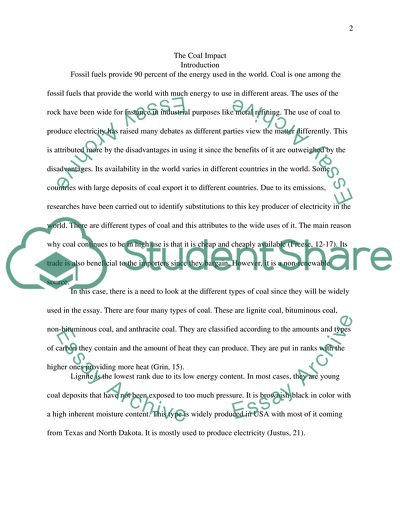Cite this document
(Coal and the Local Environment Research Paper Example | Topics and Well Written Essays - 3750 words, n.d.)
Coal and the Local Environment Research Paper Example | Topics and Well Written Essays - 3750 words. Retrieved from https://studentshare.org/environmental-studies/1768146-the-coal-impact
Coal and the Local Environment Research Paper Example | Topics and Well Written Essays - 3750 words. Retrieved from https://studentshare.org/environmental-studies/1768146-the-coal-impact
(Coal and the Local Environment Research Paper Example | Topics and Well Written Essays - 3750 Words)
Coal and the Local Environment Research Paper Example | Topics and Well Written Essays - 3750 Words. https://studentshare.org/environmental-studies/1768146-the-coal-impact.
Coal and the Local Environment Research Paper Example | Topics and Well Written Essays - 3750 Words. https://studentshare.org/environmental-studies/1768146-the-coal-impact.
“Coal and the Local Environment Research Paper Example | Topics and Well Written Essays - 3750 Words”, n.d. https://studentshare.org/environmental-studies/1768146-the-coal-impact.


